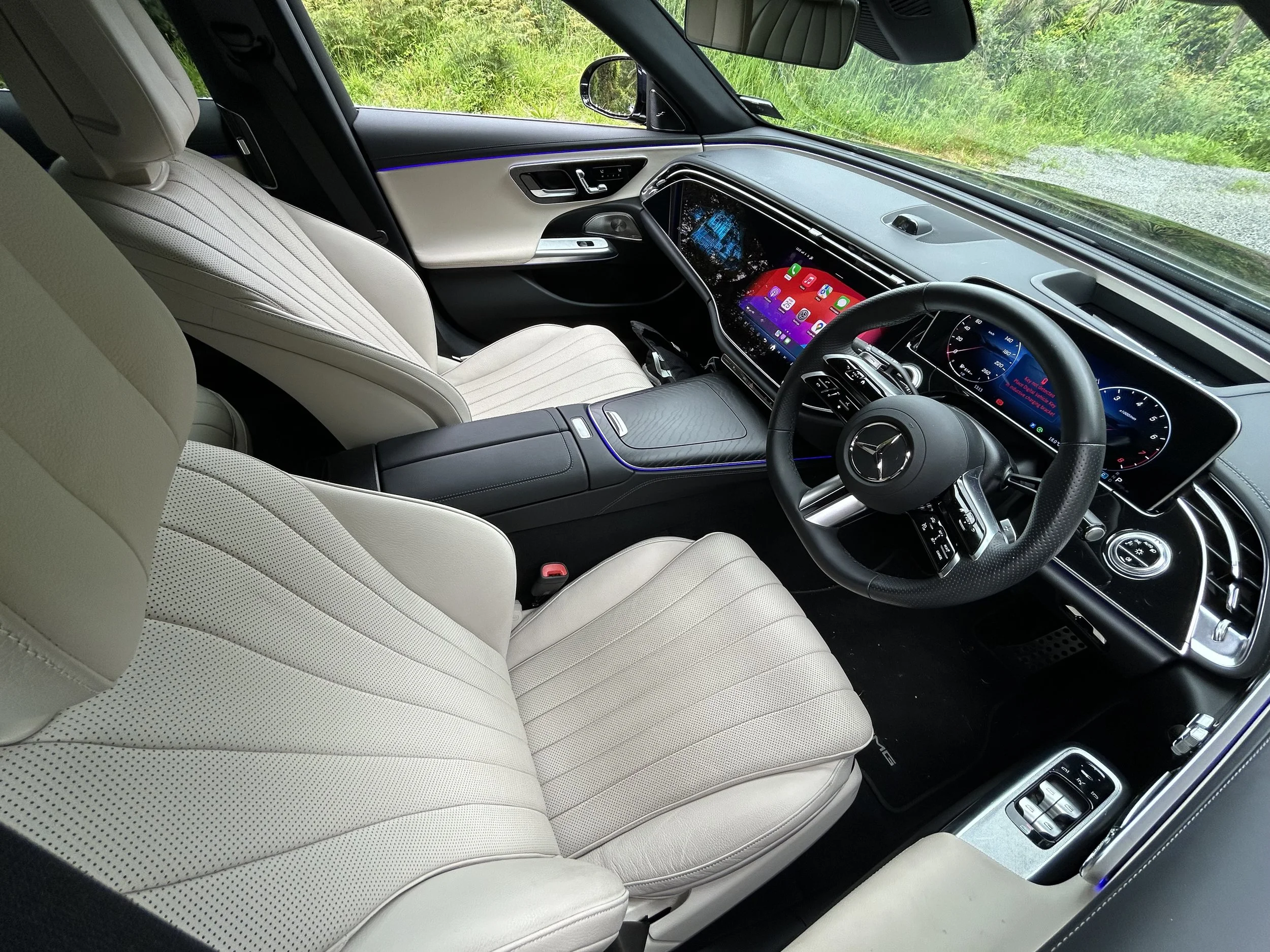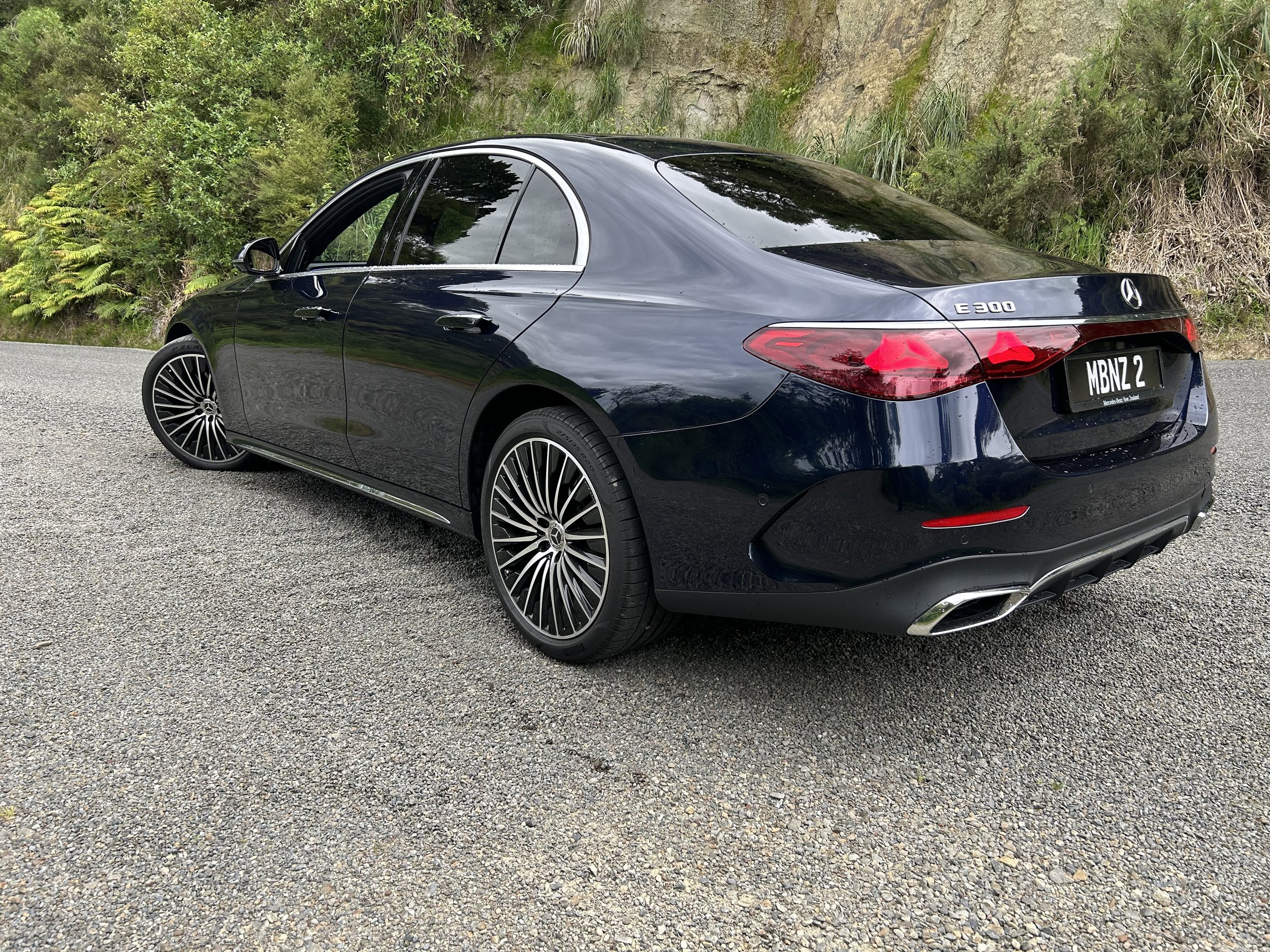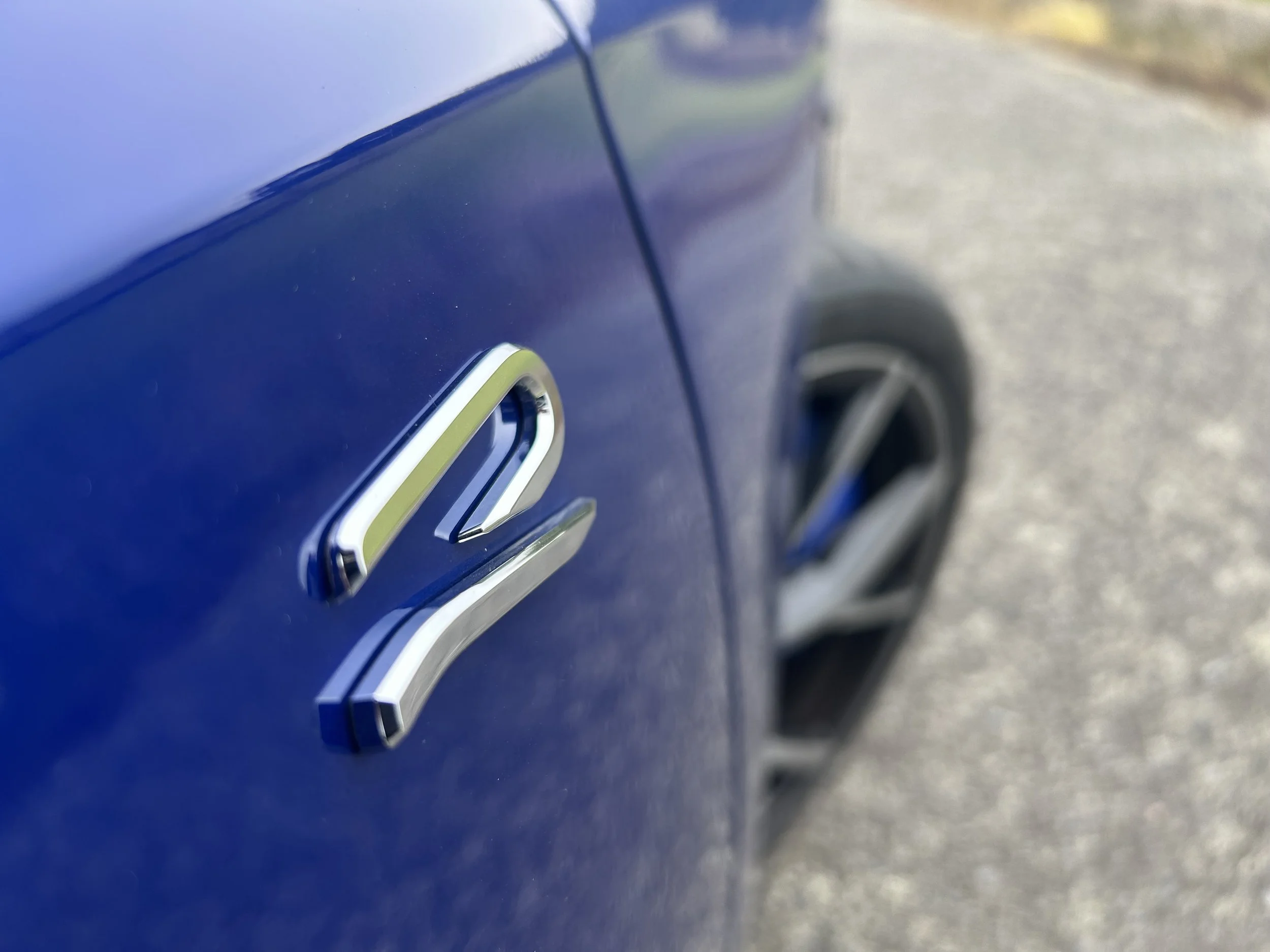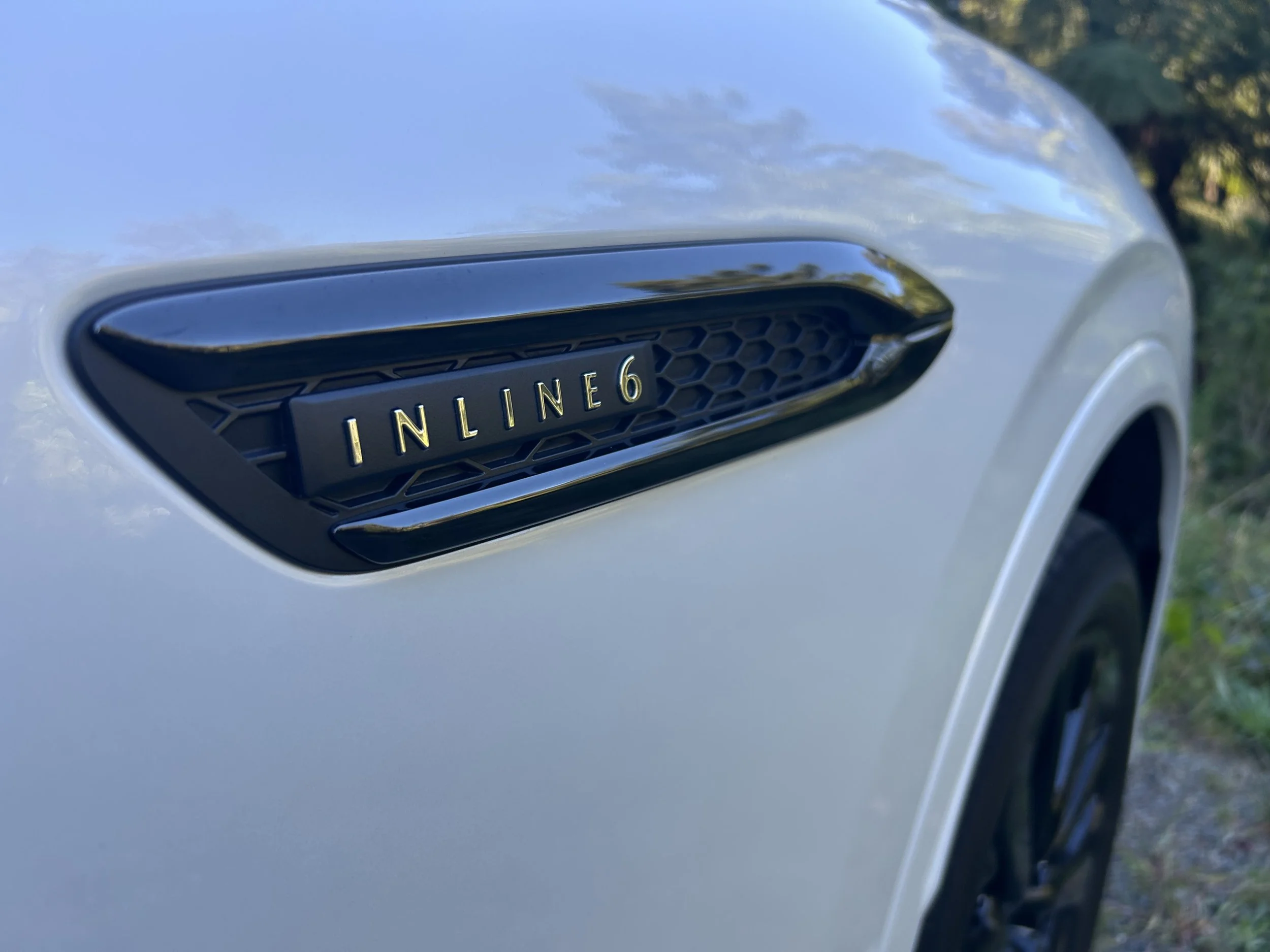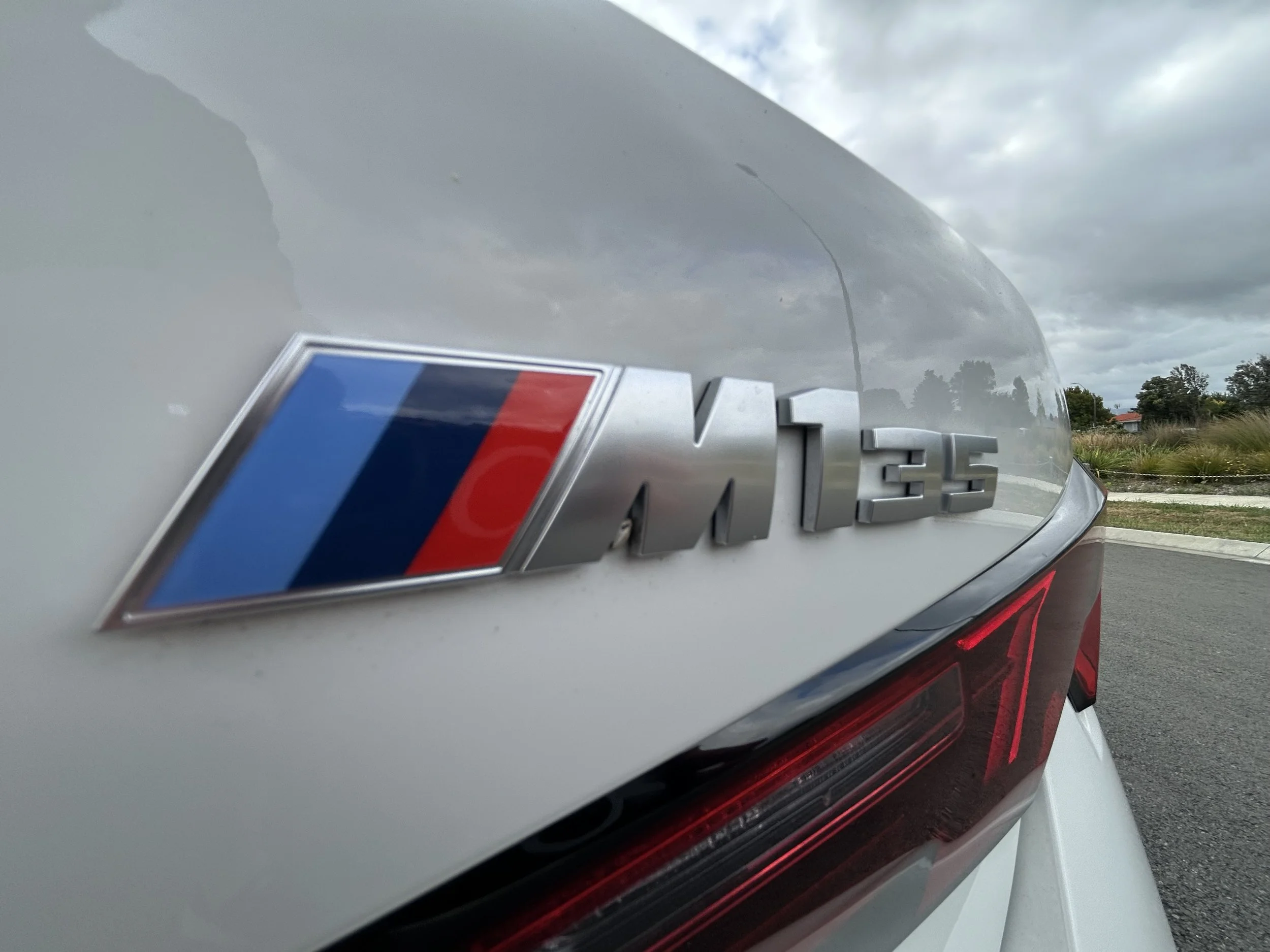Mercedes-Benz E300 roadtest review: High-tech with tradition
/The latest iteration of one of the oldest model lines from one of the oldest car makers is now down to one mainstream choice, but still resolutely looks forward.
How much? $134,100 ($148,700 as tested).
Powertrain: 2.0-litre four-cylinder turbocharged petrol with 48 volt system, nine-speed automatic, 190kW/ 400Nm; rear-wheel-drive.
Dimensions: Length, 4955mm; width, 1860mm; height, 1455mm.
We like: Another beautifully-engineered Mercedes; well-appointed, refined; impressive economy from a well-mannered engine.
Not so much: Even with the latest tech, there’s an old-school aura; regardless how impressive the drivetrain is, some will sneer at it being a ‘small’ four-pot.
CONSUMER shift to sports utilities has been so seismic that, in all likelihood, had Benz decided not to bring the latest E-Class sedan here, that decision potentially might not have made much of a news headline.
Booted four-doors aren’t wholly dead and buried. Tesla for one has shown how well that format can work in the industry's pivot toward electrification.
Even so, the light is clearly dying out for a genre that, back in the day, was the most popular way to ferry your family around. Many brands that used to be big in that game are no longer competing at all.
For Mercedes, it’s a bit different. The E-Class is among the foundation stone internal combustion cars on which it has built a world-leading reputation. One day there will be life without this line up staple. That’s why the EQE already exists. But not yet.
In this moment, we’re in transition, and so is the E-Class. The brand says its job is to balance tradition with modernity and ‘build a bridge’ between traditional executive sedans and the tech-filled EVs of the future.
And, fair dues, for all the change that has come and is incoming, it fulfils that remit more than adequately. For a car whose shape that speaks to an older age it is also, not least in respect to the technology spread, nonetheless very much of this time. Most obviously within the cabin but also with the drivetrain and in respect to how it interacts with a driver.
In all those aspects, this ‘Captain Sensible’ has become almost as future-forward as the electric EQE and imparts such robust health you’d think eulogy writers will steer clear for a little while longer.
All the same, inasmuch as the new E-Class family in Germany is quite broad, there’s very good reason why only two variants are set for sale here. And why there’s likelihood the E300 that has shipped in already to offer a 2.0-litre four-cylinder petrol motor paired with an electric motor could well be outsold by the AMG E53, coming next year.
The car as presented to Kiwis right now smacks of being a careful selection; aimed as always at wealthy private buyers looking for something comfortable and luxurious, it is nonetheless not going fully overboard in any specific way.
A Goldilocks choice. The price, the specification, the provision of a smallish capacity but big-lunged engine … all are extremely ‘considered'. Not too much, not too little.
For all that, from a week of driving, I wouldn’t disagree that the E300 is a sweet spot car, including in how it presents in the roadscape, where it has a sharp smartness.
Does the styling allow it to resound as the most modern Mercedes around? Fair to say that, as classy as the car is, it’s also rather ‘classic’. Enough so for a guy at a Taupo hotel where I overnighted to comment, as I alighted from parking, “you’ve kept that one tidy.”
For all the good vibes it imparts, not least as a comfortable and relaxed cruiser with impressive efficiency, was there anything here that might trigger second thoughts for those buyers who have been gravitating towards the added practicality, high driving position and dominant road presence Benz’s SUVs offer? Erm … not really. If it has that X-factor, then it’s well hidden.
When zeroing in on tangible competencies, all the same, one in particular stood out with a week-long test that involved two two-hour trips and another two with almost four hours’ driving each way.
These open road involvements presented excellent opportunity to test the true mettle of the car’s mild-hybrid 2.0-litre four-cylinder petrol engine, and didn’t disappoint.
Despite this being a sizeable car, the engine has enough brio to keep it feeling perky; the 0-100kmh time of 6.3 seconds is, in itself, a good indicator of that. Setting off, the mild-hybrid assistance means the engine never feels strained, and the nine-speed automatic shifts seamlessly.
What really resonates is how perfect its performance is for a long trip. The mid-range oomph is more than enough to keep it on pace with the traffic flow and it performs really quietly; outside fully hard throttle application, this remains extremely dignified.
On top of that, even without rigorous use of the Eco mode (which isn’t a default, that’s Comfort), there’s an access to efficiency which, in my experience, was simply stunning. Going large and heavy is usually terrible for fuel economy, so Benz quoting a combined fuel economy figure of 7.2 litres per 100 kilometres outwardly seems optimistic.
Yet, in my experience, it seemed more of an understatement. Care to observe limits was taken, but not to point of absolute rigour, I was happy to overtake when opportunity arose and certainly wasn’t causing any tailbacks. So to see an overall end of test average of 6.0L/100km was … well, pretty delightful, really. That’s the kind of economy that would be pleasing in a much smaller, lighter car.
What makes it all the more impressive is that, often as not, the nine-speed auto is often pegging back to eighth, even seventh, to keep the flow going. You might not realise this, because the shifts are so imperceptible.
The sense of this derivative being tailored for long-legged running goes beyond the drivetrain; the car as a whole feels quite relaxed to glide along. The focus on comfort is clear; Benz’s driver’s seat is a paragon for starters.
Beyond that, it is a car well insulated from outside noise - not as tranquil in atmosphere as the EQE, but close. There’s very little wind noise once you reach cruising speeds and tyre noise is also kept to a minimum.
The test car was outfitted with two options packs, the Energising Plus Package ($5200) which adds multicontour front seats, Air-Balance, Seat Heating Plus and heated rear seats and a Plus Package ($9400), with Airmatic suspension, rear-axle steering, power door closing, enhanced alarm system, upgraded lights and illuminated grille and 4-zone climate control.
Thanks to the air suspension, it is pretty much impervious to bumps and ruts, the obvious caveat being that you need keep it outside of the sports settings. Which is easily decided upon because, frankly, the E-Class is just not as overtly driver-centred for fun as, say, a BMW or an Audi.
The car has a longer wheelbase than before, which helps to improve its ride and stability. The steering is light and responsive and there’s lots of grip on offer. But there’s no escaping the feeling of its mass when you push it.
A standout feature of any recent Mercedes has been the brand’s impressive interior design and build quality. Material quality is impressive and high-tech touches abound, from motorised air vents to ambient interior lighting that can be set to all sorts of hues and looks particularly impressive at night.
You won’t necessarily notice all that initially because of all the screens. I’d long imagined the E-Class to be an older buyers’ choice, or at least a car that resonates mostly with a conservative crowd.
So it to be the first petrol Benz to feature something that makes the EQ electric model really cool; digital screens that stretch right across the dashboard, including an individualised control panel for the front passenger. What’s called the Hyperscreen in EQ-speak is the Superscreen here, but technically there’s no discernible difference.
It’s brilliant, also more advanced that the system that slots into the S-Class, but also of course can come across as being a bit complex, if you have the inclination to unwrap the full potential. As per usual, there are all sorts of sub-menus. And the screen in front of the passenger can provide access to video streaming platforms, which the driver cannot see, thanks to clever pixel-filtering technology.
The displays cannot be ignored - the main panel one in front of the driver is very much in your face, likes (though polarised sunnies dim it a bit) the head up display - and all the touch elements of the infotainment are configured to be as much like a smartphone as possible.
As a sole occupant for the long distance stuff, I really let it off lightly. The big thing was the usual use of wireless phone projection to hook up Apple CarPlay, to listen to the various motorsport podcasts I like and my wife doesn’t. (BTW, this was the first Benz in a while in which the phone projection always worked seamlessly for me. Interestingly, a mate who’d also tested it had problems).
Had I set up the MercedesMe app, I could have used my phone as a digital key, and could also use the ‘hey Mercedes’ voice recognition functionality, which on this car is more advanced than ever, up now to understanding and acting upon complex demands like turning on the heated seats and picking a warmer interior ambient lighting setting only if the cabin drops below a certain temperature.
The car’s AI systems also analyse your habits and adapt settings accordingly – for example, it may turn on the seat massage function if it notices you always do it at the same time every morning - and is the reason for a small camera facing the occupants on top of the dashboard. It’s there for taking selfies or for using video-conferencing software like Zoom when you’re parked up. Or at least, will be once that’s all sorted for national application. Also lurking is MBUX interior assistant, an infrared camera that anticipates your next move, like dipping the mirrors when you look at them.
A bit too intrusive and involving? It’s just the way of a tech world, sorry. But you wonder how long it is before someone looks to mind control … hopefully not involving a tiny probe to slot our of the headrest into your cerebral cortex.
Passenger comfort is decent, too. It’s not as advantaged in the rear as the S Class or, for that matter, the EQE; because of the driveshaft, there’s a high and wide central hump in the floor limiting foot space, but it’s comfy enough. The longer wheelbase lends rear-seat passengers an additional 10mm of kneeroom and 17mm more legroom. The boot capacity of 540 litres enhances all the more when the rear seats fold down, this facilitating from the boot.
There’s even an ‘Energising Comfort’ system that, though primarily to perk the driver up in case of fatigue via a programme of music and lighting, also acts to help reduce car sickness with passengers.
The feeling of security and well-being is, of course, abetted by it having a very decent crash test rating, the full five stars from Euro NCAP, and it has an extensive suite of safety assistance systems. During the engineering process, Mercedes also said a lot of thought went into creating a ‘particularly rigid passenger cell’ to protect occupants, and seat belts and airbags that can actively adapt to the situation in the event of a crash.
But it’s also always on the look out for what other motorists might be up to and, if if senses an issue, it relates this pretty effectively, though thankfully without the Defcon level alarm shrills and bongs that come with some cars.
In many ways, then, the E300 comes across as one of the most comprehensively tailored cars I’ve driven this year. I deeply admired it for that.
The inhibition is, of course, is that you just know that everything it does now will also be accomplished by the other kind of Benz cars, in the more convenient kind of body style. Including for my lifestyle, to be fair.
Being a select choice for a select few is the way for so many sedans; those who stay true here will find a car that is traditional yet resolutely in striving to set a modern pace. It’s a fitting finale to a grand lineage.


